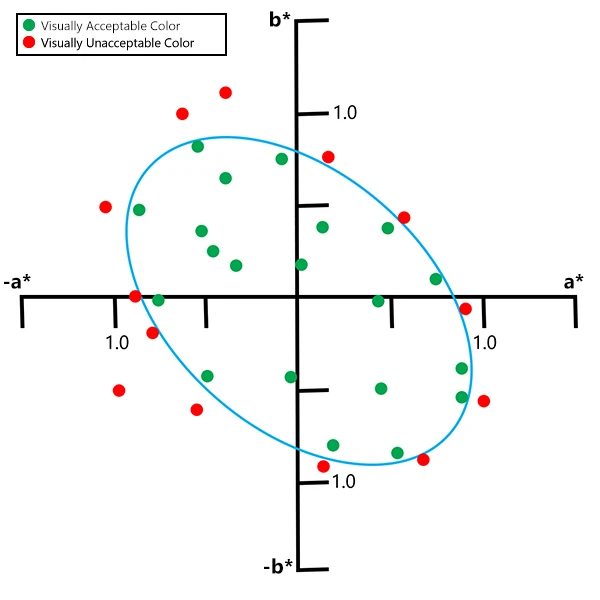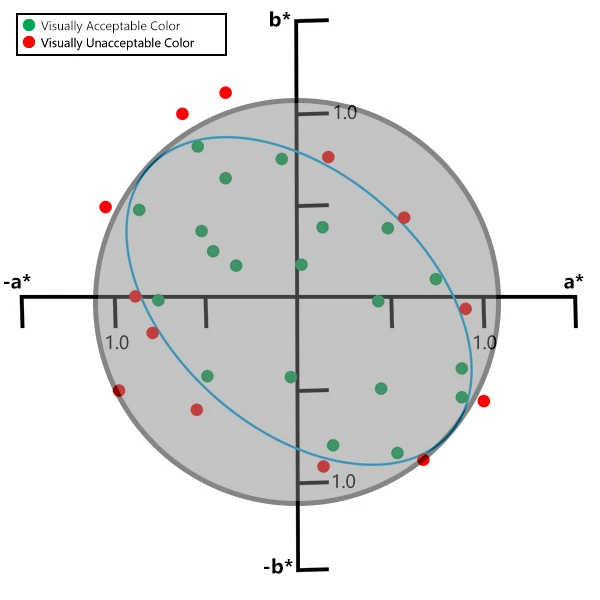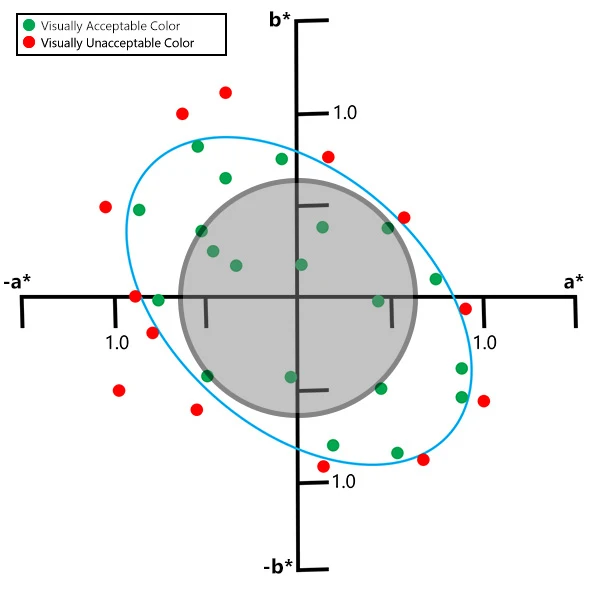What Color Tolerancing Method Should I Use?

Establishing color tolerance is the key to an effective color control program. Color tolerance is a limit defined to determine how much perceived color difference is acceptable. Through the years, various color tolerancing method have been developed and below are some of the common methods.
Box Tolerance
Box tolerancing uses the L*, a* and b* values respectively to establish the tolerance in the form of a square or rectangular box.
Delta E*ab (CIE 1976)
Delta E*ab or ΔE*ab was the first internationally endorsed color difference formula introduced by the International Commission on Illumination (CIE). it is a single number, calculated using the formula below, to determine the difference between two colors.

For many years, it has been accepted that our visual perception of color difference is best represented by an ellipsoid shape. When using either box tolerance or Delta E*ab, some of the visually unacceptable samples can be accepted as shown in Figure 1.
When we attempt to make the tolerance small enough to fit within the ellipsoid, some of the visually acceptable samples will be rejected as shown in Figure 2.
CMC (l:c)
CMC tolerancing was developed using the L*C*h notation to provide better correlation with visual assessment. Using the L*, C* and h values of the standard color, it creates an ellipsoid within the color space.
The ellipsoid varies in shape and size depending on several factors; the position of the standard color within the color space, the defined ratio of lightness and chroma (l:c) and the commercial factor (cf). CMC is recommended for textured and uneven surface. Its formula is defined as:



Delta E94 (CIE 1994)
Like CMC tolerancing, ΔE*94, a revision of the ΔE*ab, is also an elliptical tolerancing method and uses the L*C*h notation. It’s weighting functions are based on tolerance data obtained from automotive coating samples. The ΔE*94 is best used on smooth surface and its formula is defined as:

Delta E00 (CIE 2000)
Delta E00 or ΔE00 was developed to address the perceptual uniformity issues found in ΔE*94. It is refined with 5 corrections: lightness weighting function (kLSL), chroma weighting function (kCSC), hue weighting function (kHSH), interactive term between chroma and hue differences for blue colors and scaling factor for CIELAB a* axis for near-neutral color differences. The ΔE00 formula looks as follows:

Learn how to establish an effective color tolerance program with this white paper.
Alternatively, you can contact us for a free consultation with our color application specialists.
